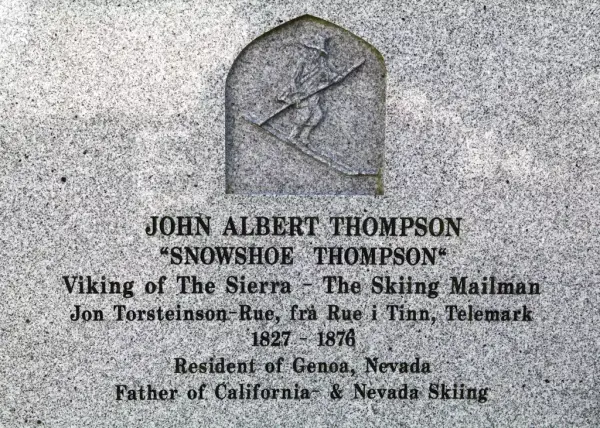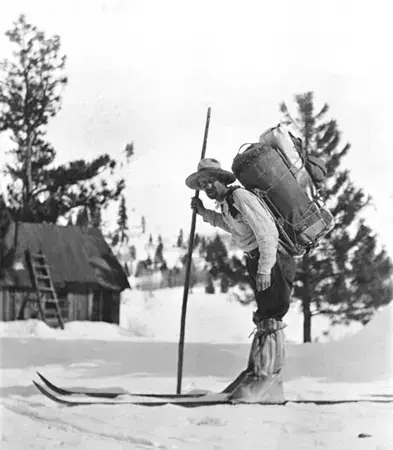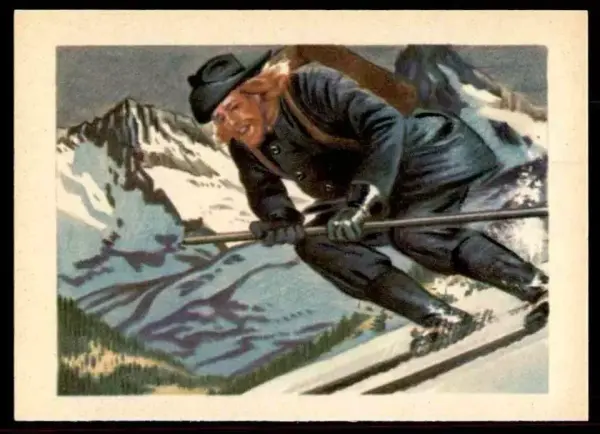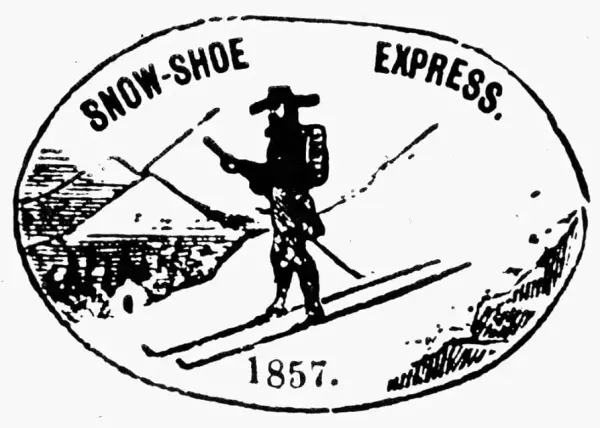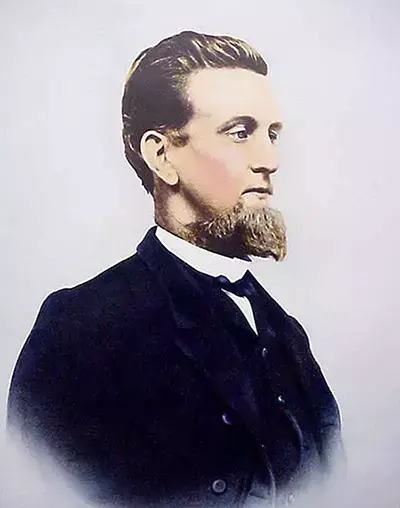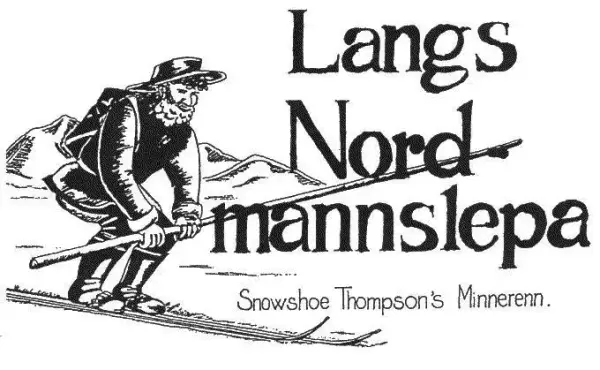- 1/1
Jon Torsteinson Rue was born in 1827 in Luråsbygda in Tinn. He was the youngest of many children, and grew up on a small farm under difficult conditions. Their father died when Jon was 2 years old, and all the children had to contribute to the family's survival.
From young age, Jon was with his older siblings herding and setting up grouse traps in the winter. He tought early on to ski in steep terrain. Skiing was the everyday and natural means of transportation and was used for both play and work. Jon also gained insight and knowledge about making skis himself.
Word of America and the conditions there reached the village of Tinn early on, and thoughts of emigration took shape among many.
10-year-old Jon and his mother Gro were among the 50 people who on May 17th 1837 was the first group of people from the East of Norway to emigrate to America.
Three months later they arrived in New York. It was a hard and miserable crossing for the inland people with a small sailship across the Atlantic.
They then traveled further on to Illinois. Here they met other emigrated Norwegians, and Jon started working for a preacher who also worked at a sawmill. The pay was clothes and boots, and Jon quickly learned to speak American.
Eventually, several of Jon's siblings came from Norway, and the whole family continued to Iowa.
In 1846, Jon's mother died, and Jon continued travelling with his brother Torstein to Wisconsin. It was around this time that the brothers "Americanized" their surname to Thompson.
In the years that had passed since he came to America, John had grown up to be a big and powerful fellow with practical experience in many fields.
In 1848, the first major gold discovery was made in California.
John and his brother saw business in going west with some dairy cows to sell milk in the new settlements there. The cattle did not make it through the winter, and Johns brother traveled back to Wisconsin.
John on the other hand, stayed in California. He tried his luck as a gold digger for a short period without success, but versatile and hardworking as he was, he managed to make a living by selling gold digger equipment, logging, farming and hunting.
In the wintertime with storms and large amounts of snow, the mountains between California and Nevada were sometimes impassable for normal traffic. The government had great difficulty in getting the mail delivered, and were looking for mail carriers who could manage the bad conditions.
John registered his interest, and in January 1856 he set off.
His skis were long and weighed around 11 kg. He had a long pole, wore ordinary clothes and his provisions were dried meat, sausages and some biscuits. The mailbag weighed between 20-40 kg, and could contain medicines, tools, clothes, books, kitchen utensils and the like.
The highest peaks in the Sierra Nevada are more than 3,000 meters above sea level, and the route was mostly in steep forest terrain with up to 7 meters deep snow and untrodden tracks.
Depending on the weather and driving conditions, he spent between 3 and 4 days on the trip one way.
John was a big and powerful fellow with good knowledge of nature and mountain wisdom and never got lost in the mountains. He was trained in "reading" nature and tracks, and he was a persevering and skillful cross-country skier in rugged terrain. In the winter of 1856-57 he crossed the Sierra Nevada 31 times in all kinds of weather. He carried both mail and small goods with him on his trips, and his reputation grew larger and larger.
The local newspapers followed John's travels, and he quickly became known as "Snowshoe Thompson".
John delivered mail and shipping goods for 20 years. He started a company for winter transport with sledges and responsibility for keeping the roads open. Although both telegraph lines and railways were developed and crossed the Sierra Nevada in the 1860s, there were still large parts of the mountain area that still needed the help of Snowshoe Thompson and his team in winter.
He built himself a farm in Diamond Valley, and in 1866 married the English woman Agnes. In the same year, John became an American citizen, and in 1867 they had a son, Arthur Thomas.
In the spring of 1876, John Thompson fell ill and died, aged 49. The son Arthur died only 2 years later and is buried together with his father.
When he died, there were obituaries about him in the New York Times, and he was honored with greetings from President Gerald Ford and Governor Ronald Reagan on the centenary of his passing.
In the states of California and Nevada, a number of memorials and plaques were later erected in honor of Snowshoe Thompson. The area around the Olympic city of Squaw Valley was decided to be called Snowshoe Thompson State Park.
During the Olympics in Squaw Valley in 1960, the entire Norwegian ski troop went down to the cemetery in Genoa and paid tribute to Snowshoe Thompson - the skiing pioneer.
In Norway, Snowshoe Thompson is honored with an annual memorial run in his home district every Palm Sunday. The race runs in the high mountains from Uvdalsfjellet to Luredalen and has had up to 780 participants.
On the monument outside the Emigrant church, John Thompson, who left Norway as Jon Torsteinson Rue, is rightfully honored as one of the pioneers of American skiing, together with a number of other Norwegians who brought their skiing skills with them to America.
- 1/3
- 2/3
- 3/3
